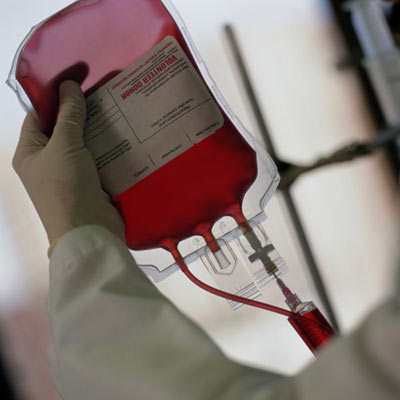近日来自西安交通大学、第四军医大学和陕西师范大学的研究人员在血液替代品研究中取得突破性进展,相关研究论文发表在生物材料领域最高影响因子杂志《生物材料》(Biomaterials,2010年影响因子为7.88)杂志上。

来自西安交通大学生命学院的吴道澄教授、第四军医大学的徐礼鲜教授和张惠教授为这篇文章的共同通讯作者。该研究得到了国家新药基金、“973”项目和国家自然科学基金的资助。
输血对于临床手术、抗灾和战场救护是不可缺少的医疗手段。近年来,血液需求量不断增高,而安全有效的血源却日益紧缺,靠人献血面临血源短缺、血型匹配难,低温储存,保存期短,运输不便,病毒污染等问题使输血安全受到威胁。开发出血液代用品成为了国际科学界和企业界关注的研究热点。
在这篇文章中,研究人员利用本身具有血液扩容性质的直链淀粉包裹血红蛋白,通过季胺盐修饰使之具阳离子性,这样既可以牢固包裹具有负电荷的血红蛋白,也可以克服直链淀粉在溶液中容易膨胀的不足。使其血红蛋白包裹率大于80%、粒径小于100nm并在体内保持稳定。该纳米载体可以有效避免动物休克模型的肺损伤,可同时作为血液替代品和血液扩容使用。
这一研究在血液代用品方面有潜在的应用价值,为解决血源短缺问题带来希望。
相关英文论文摘要:
Cationic amylose-encapsulated bovine hemoglobin as a nanosized oxygen carrier
Nanosized hemoglobin-based oxygen carriers are one of the most promising blood substitutes. In the present study, a comprehensive strategy for the preparation of nanosized cationic amylose-encapsulated hemoglobins (NCAHbs) was developed. First, cationic amylase (CA) was synthesized from amylose and quaternary ammonium salt by an etherification reaction. The structure of CA was characterized using Fourier transform infrared spectrophotometry (FTIR) and proton nuclear magnetic resonance spectrophotometry (1H NMR). The degree of substitution and the zeta potential were also measured. Then, the NCAHbs were prepared by electrostatic adhesion, reverse micelles and cross-linking. The UV–visible spectrophotometer was used to measure the entrapment efficiency (EE%) and drug loading efficiency (DL%) of the NCAHbs. Transmission electron microscopy and Malvern Nano-zs 90 analyzer were used to observe the size distribution and morphology of particles. Chemical structure was determined from the FTIR spectrum. A Hemox analyzer was used to measure the P50 and Hill coefficients. A lethal hemorrhagic shock model in rats was used to evaluate the therapeutic effect of the NCAHbs. The results showed that the combined methods improved the size, stability, EE%, DL%, and oxygen-carrying capacity of the NCAHbs. The average diameter of the NCAHbs was 92.53 ± 3.64 nm, with a narrow polydispersity index of 0.027. The EE% was 80.05% ± 1.56% and DL% was 61.55% ± 1.41%. The P50 and Hill coefficient were equal to 28.96 ± 1.33 mmHg and 2.55 ± 0.22, respectively. The size of NCAHbs remained below 200 nm for six days in PBS solution. The NCAHbs could effectively prevent lung injury from progressing to lethal hemorrhagic shock because they acted as both a volume expander and an oxygen carrier.
英文论文链接:https://www.sciencedirect.com/science/article/pii/S0142961211009732







